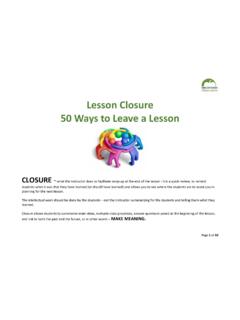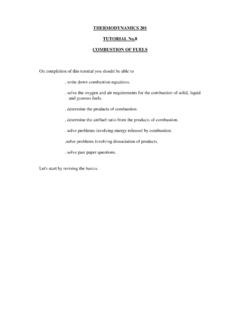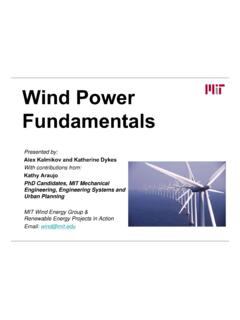Transcription of FIREFIGHTING BASICS: FIREFIGHTER I & II
1 Action Training Systems, Inc. 2019 800-755-1440 x3 FIREFIGHTING basics : FIREFIGHTER I & II Action Training Systems, Inc. has updated their most popular training product Essentials of FIREFIGHTING : FIREFIGHTER I & II to reflect the most recent changes in NFPA 1001, Standard for Fire Fighter Professional Qualifications. This 33-part training series now titled FIREFIGHTING basics : FIREFIGHTER I & II has had many revisions and additions, it continues to be an excellent companion to the fire service s most popular and current edition textbooks.
2 Included in the revised titles is new research from the National Institute of Standards and Technology (NIST) on fire behavior and fire control including controlling flow paths and best practices in ventilation operations and tactics. There is now greater emphasis and demonstrations on oxygen control and coordinating fire ground activities. The series also includes discussions on use of transitional attacks, new tactics for basement fires, the use of master streams for exposure control, and the use of air monitors for identifying hazardous atmospheres.
3 Other expanded topics include information on response to ground-cover fires and recommended practices for response to Active Shooter/Hostile Event Response and the importance of post incident reporting. There is updated or expanded information on responder wellness and mental health, such as the importance of fitness, recognizing and addressing PTSD, and on-the-job recommendations for limiting cancer risk. Additional FIREFIGHTER safety concerns are presented including best practices for roadway response, training ground safety and updates for the use of SCBA on scene, monitoring air consumption, and the use of controlled breathing techniques.
4 All of the updated programs have been meticulously reviewed and validated by leading subject experts and reflect the most current recognized standards and best practices. Each title features dynamic and engaging high-quality video and graphics, and accurately demonstrates and reinforces key training concepts. Action Training Systems training programs have been proven to significantly increase student s competency and retention of information. For more information, please call or visit our website. Train for Competency. Train for Safety. Train for Results.
5 2019 Action Training Systems, Inc. 1-800-755-1440 ext. 3 1 FIREFIGHTING basics : FIREFIGHTER I & II When it comes to training firefighters for certification or recurrent training purposes, our updated 33-part video-based training series, FIREFIGHTING basics : FIREFIGHTER I & II, includes everything you have come to trust and depend on from Action Training Systems. All titles feature: Dynamic and engaging high-quality video that has been meticulously reviewed and validated by leading subject matter experts Instructionally designed and simplified technical material that reinforces training objectives Skills demonstrations and prerequisite knowledge that covers key training concepts This series teaches to current NFPA 1001: Standard for Fire Fighter Professional Qualifications, and is an excellent teaching companion to popular textbooks and training manuals.
6 Our videos are proven to significantly increase learner comprehension and the retention of information, making for a more competent responder. FIREFIGHTER I 1. FIREFIGHTER Safety: Part 1 Video Runtime 27:01 Presents an overview of fire department and FIREFIGHTER responsibilities under NFPA 1500, including how important health, fitness and mental wellness is to your safety, ways to limit your exposure to cancer-causing risks and other work place hazards, including tips for accident and injury prevention. Also reviewed is the use of the ICS system and how control zones help you to avoid or identify risks at an emergency scene or active shooter event.
7 Training Objectives: 1. FIREFIGHTER Responsibilities of NFPA 1500 2. FIREFIGHTER Fitness, Health & Wellness 3. Fire Station Safety & Training Safety 4. The Incident Command System 5. Hazard Control Zones Delivery Formats (includes closed-captioning): Online Interactive Courses Online Streaming Videos DVDs Additional Materials: ATS PowerPoints, ATS Question Files, ATS Facilitator Guides, and Textbooks/Curriculum from Publishing Partners (IFSTA & PSG/J&B) 2019 Action Training Systems, Inc. 1-800-755-1440 ext. 3 2 2.
8 FIREFIGHTER Safety: Part 2 Video Runtime 24:11 Discusses standard operating procedures and the importance of teamwork. Describes accountability systems and on-scene rehabilitation and their importance to safety. Presents survival methods for firefighters who become disoriented or trapped in fires. Identifies safe procedures for riding fire apparatus, working on roadway emergency scenes, shutting off utilities at an emergency scene and responding to electrical emergencies. Training Objectives: 1. Safety in Standard Operating Procedures & Teamwork 2.
9 Personnel Accountability Systems & On-Scene Rehabilitation 3. Disorientation or Entrapment Survival 4. Vehicle Passenger Safety 5. Roadway Safety 6. Utility Shut Off Procedures 7. Safety at Electrical Emergencies 3. Fire Dynamics Video Runtime 27:02 Describes the science of fire and combustion , the fire tetrahedron, states of fuel, pyrolysis and vaporization. You will also learn to identify types of heat energy, methods of heat transfer, the stages of compartment fire development, the products of combustion , structure fire flow paths and factors in rapid fire development.
10 Training Objectives: 1. Fire & combustion 2. Oxygen & Oxidizing Agents 3. Fuel: Pyrolysis & Vaporization 4. Heat Energy & Self-Sustained Chemical Reaction 5. Three Methods of Heat Transfer 6. Products of combustion & Fire Development Factors 7. Stages of Compartment Fire Development 8. Structure Fire Flow Paths 4. SCBA 1: Introduction Video Runtime 27:55 Presents the functions of each component of the SCBA system, safety features of various types of SCBA, limitations of SCBA and a review of hazardous environments that require respiratory protection.




